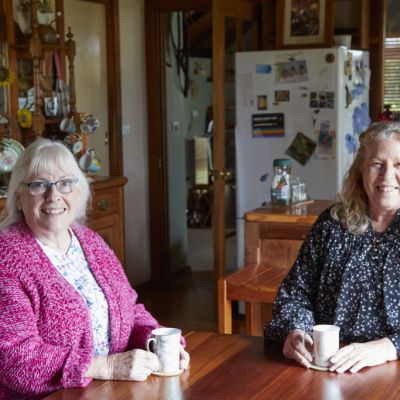‘Basically impossible’: Housing affordability is the worst on record
First home buyers would have to contend with mortgage repayments of more than half their income, new modelling shows, as housing affordability becomes more difficult than ever.
The typical Australian home now costs eight times the median household income – a record high – while the deposit hurdle is a sliver off its record high, and rents are at a record high share of incomes, the ANZ/CoreLogic housing affordability report released on Wednesday shows.
The ABS considers a household to be in housing stress if it pays more than 30 per cent of its income on housing costs.
The report found that it now takes 10.6 years to save for a 20 per cent deposit, as of September, and it takes 50.6 per cent of the median household income to afford repayments on a median home.
While a household is saving, it faces median rents that are now 33 per cent of the median income. All figures were more than their 20-year averages.
CoreLogic head of Australian research and report author Eliza Owen said housing affordability continued to worsen.
“The key issue is housing values continue to outpace income growth,” Owen said. “Incomes were up about 3 per cent over the past year while housing values in the year to September were up about 6.5 per cent nationally.”
“Rent values have continued to rise strongly, and interest rates are also relatively high. So it’s an affordability challenge on multiple fronts.”
AMP chief economist Dr Shane Oliver said any improvements to affordability during recent downturns are firmly in the rearview mirror.
“It’s pretty bleak if you’re trying to get into the property market,” he said. “It’s not surprising because property prices did have a brief fall in 2022 and affordability metrics improved briefly but since then, they have deteriorated.
“The reality is that with house prices rising faster than income, affordability continues to deteriorate and that improvement we saw in 2022 has been wiped out.
“It really just highlights the damage the ongoing rise in prices is doing to people’s ability to get into the property market.”
A high Reserve Bank cash rate and rising prices, a historically unusual combination, meant both the dwelling value-to-income ratios and the portion of income needed to service a new loan were worsening at the same time, Oliver said.
“When you put high interest rates and high house prices together, you end up with a doubly bad relationship,” he said. “It’s a problem. It’s unusual because you’d expect rates to go up, prices to go down and affordability improves, and it gives people an opportunity to get in.”
Owen said the so-called deposit hurdle was once a first home buyer’s primary concern.
“Once you got the mortgage, the low rates meant the repayments were more manageable,” she said. “Now the deposit hurdle and the mortgage are a pain-point for first home buyers.”
The median home was well out of reach of the median household, Owen said.
“It’s not realistic. Because the data is saying, hypothetically, if the median income household, which is about $101,000 across Australia, puts down a 20 per cent deposit on the median dwelling value with the average owner-occupier mortgage rate. What it’s telling you is it’s basically impossible … at current mortgage rate levels.”
Rising house prices despite high interest rates and slashed borrowing capacities were thought to be caused by wealthier buyers and first home buyers with access to intergenerational wealth, also known as the bank of mum and dad.
Owen said the status quo was exacerbating housing inequality. “[Homes] are not accessible on incomes and saving alone,” she said. “We can’t assume that everyone has a workaround to get into the housing market like the bank of mum and dad or moving somewhere cheaper, buying something smaller.
“It doesn’t work for everyone, especially those who don’t have access to intergenerational wealth and are just relying on their income to break into the market.”
It was unlikely cuts to the RBA cash rate would improve affordability, Owens said.
“We looked into this, and based on ANZ’s forecast of a 75 basis point reduction to the end of 2025, assuming incomes and prices are stable, then the portion of income to service a mortgage falls to about 48 per cent.
“In reality, the issue is a reduction in interest rates might put upwards pressure on housing values.”
States
Capital Cities
Capital Cities - Rentals
Popular Areas
Allhomes
More










